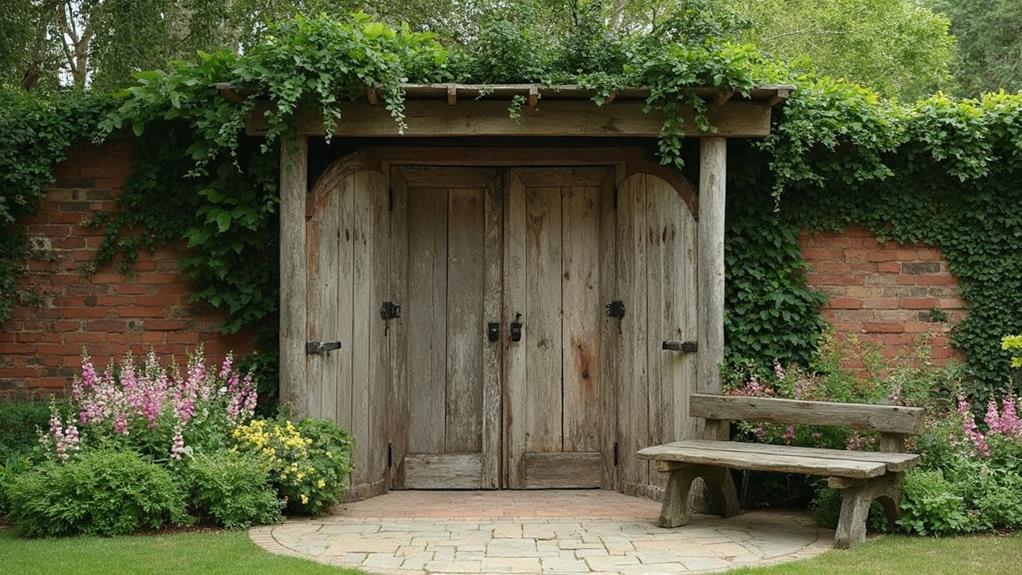Transforming your outdoor space into a photographer's paradise involves strategic planning and design. Start by assessing your area's layout, lighting, and existing features. Incorporate diverse landscaping elements to create visual interest, including plants of varying heights and textures. Install natural backdrops like weathered fences or living walls, and add architectural elements such as arches or pergolas for depth and framing. Consider lighting carefully, utilizing both natural and artificial sources to enhance your shots. Create versatile spaces with adjustable features and props to accommodate different photography styles and subjects. The key to a picture-perfect outdoor studio lies in the details and thoughtful execution of your vision.
Assessing Your Space
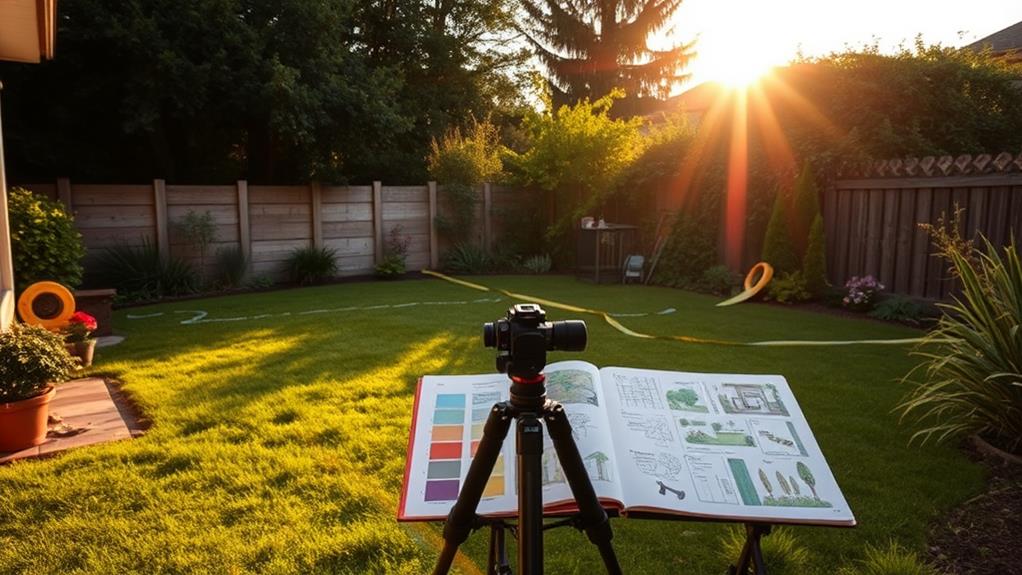
Before embarking on any renovation project for outdoor photography, a thorough assessment of your available space is crucial. Begin by evaluating the size, shape, and layout of your outdoor area. Consider factors such as natural lighting conditions, existing landscaping, and architectural elements that could serve as potential backdrops or focal points.
Analyze the terrain, noting any slopes, uneven surfaces, or obstacles that may impact your photography sessions. Identify areas that receive optimal light during different times of the day, as this will influence your renovation plans. Take into account the privacy of your space and any neighboring structures that might affect your shots.
Assess the current vegetation, including trees, shrubs, and flowers, to determine which elements can be incorporated into your outdoor studio. Evaluate the existing hardscaping features like patios, decks, or walls that could be repurposed or enhanced for photography purposes. Consider the accessibility of the space for both photographers and subjects, ensuring there's ample room for equipment setup and movement.
Landscaping for Visual Interest
Landscaping plays a pivotal role in creating visually captivating outdoor photography settings. When renovating your space for photography, focus on incorporating elements that add depth, texture, and color to your compositions. Consider planting a diverse range of flora, including flowering plants, shrubs, and trees with varying heights and foliage types. This variety will provide year-round interest and multiple backdrop options.
Create focal points within your landscape using architectural features like arbors, trellises, or decorative fencing. These structures can frame subjects and add visual interest to your shots. Incorporate hardscaping elements such as stone pathways, water features, or rustic benches to add dimension and create leading lines in your photographs.
Pay attention to the interplay of light and shadow when designing your landscape. Strategically place plants and structures to create interesting patterns and textures throughout the day. Consider the direction of sunlight and how it will affect your photography at different times. Lastly, maintain a balance between manicured and natural areas to offer a range of aesthetic options for your outdoor photography sessions.
Creating Natural Backdrops
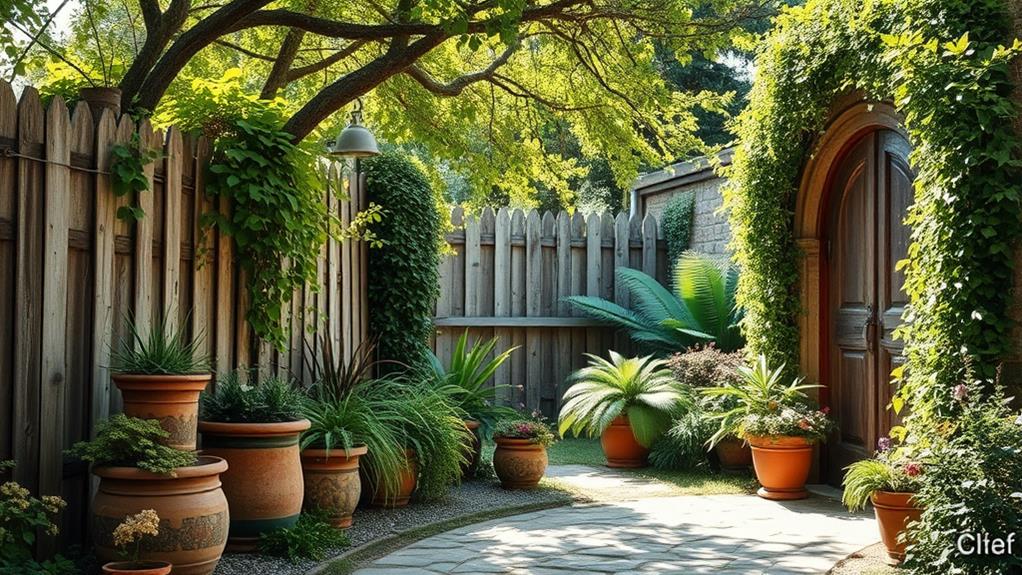
Photographers seeking to elevate their outdoor shots can benefit greatly from creating natural backdrops within their renovated spaces. These backdrops provide versatile settings for portrait, product, and lifestyle photography while maintaining an organic aesthetic.
To create effective natural backdrops, consider incorporating elements such as weathered wooden fences, rustic stone walls, or living plant walls. These features add texture and depth to images without appearing artificial. Strategically placed trellises with climbing vines or espalier fruit trees can create visually appealing vertical elements.
Water features like ponds, fountains, or small waterfalls offer dynamic backdrops that introduce movement and reflection into compositions. For a more minimalist approach, consider installing a large, smooth stucco wall in a neutral tone, which can serve as a versatile canvas for various lighting conditions.
When designing natural backdrops, pay attention to the interplay of light and shadow throughout the day. Position elements to take advantage of golden hour lighting or to create interesting shadow patterns. Lastly, ensure that backdrops are easily accessible and allow for multiple shooting angles to maximize their utility in various photographic scenarios.
Installing Architectural Elements
To enhance the visual appeal and functionality of outdoor photography spaces, incorporating architectural elements can provide compelling focal points and structural interest. Consider installing features like arches, pergolas, or gazebos to create depth and framing opportunities. These structures offer versatile backdrops for portraits and can be adorned with climbing plants or drapery for added texture.
Ornate wrought-iron gates or vintage doors can serve as standalone props, adding character and a sense of mystery to images. For a modern touch, incorporate sleek metal or glass panels that reflect light and create interesting patterns. Stone walls or pillars can introduce a timeless, rustic element, perfect for creating a sense of history or stability in photographs.
When selecting and positioning architectural elements, consider the interplay of light and shadow throughout the day. Strategically placed features can cast intriguing shadows or filter sunlight, creating dynamic lighting effects. Ensure that installations are structurally sound and weather-resistant to withstand outdoor conditions. By thoughtfully integrating these architectural components, photographers can expand their creative possibilities and offer clients diverse, visually striking settings for memorable outdoor shoots.
Lighting Considerations
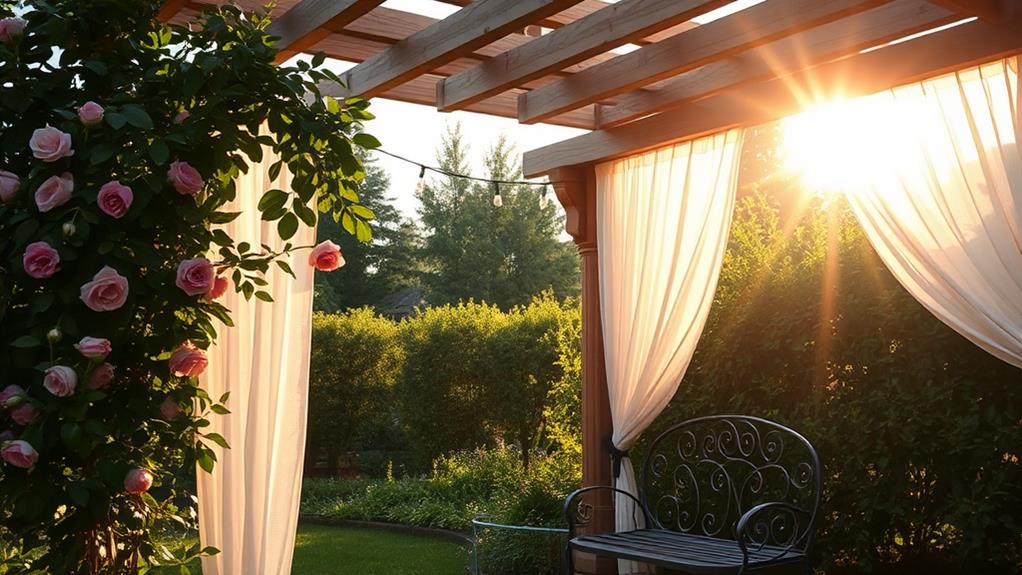
Lighting plays a pivotal role in outdoor photography, and careful consideration must be given to both natural and artificial light sources. When renovating an outdoor space for photography, it's essential to analyze the area's natural light patterns throughout the day and seasons. Identify the direction of sunlight, shadows cast by existing structures, and any potential glare or reflection issues.
To enhance natural lighting, strategically place reflective surfaces like light-colored walls or water features to bounce light into shadowy areas. Consider installing adjustable shade structures, such as retractable awnings or pergolas with movable slats, to control harsh midday sunlight and create softer, more diffused lighting conditions.
For artificial lighting, invest in versatile outdoor fixtures that can be easily adjusted or moved. Use a combination of ambient, accent, and task lighting to create depth and interest in your photographs. LED lights with adjustable color temperatures allow for greater flexibility in matching natural light or creating specific moods. Install weatherproof electrical outlets in convenient locations to power portable lighting equipment. Finally, incorporate dimmable lights to fine-tune the lighting intensity and achieve the desired atmosphere for various photographic styles and subjects.
Seasonal Adaptability
When designing an outdoor photography space, seasonal adaptability is crucial for maintaining versatility and productivity throughout the year. Consider incorporating elements that can be easily modified or replaced to suit different seasons and weather conditions.
Install adjustable screens or removable panels that can provide shade in summer and wind protection in winter. Opt for plants that offer visual interest across seasons, such as deciduous trees for autumn colors and evergreens for year-round foliage.
Implement a modular system for backdrops, allowing quick changes to match seasonal themes. Use weatherproof materials for permanent structures and invest in portable, collapsible equipment for flexibility. Create designated storage areas for seasonal props and accessories, ensuring easy access when needed.
Consider installing a retractable awning or pergola with adjustable louvers to control light and provide shelter during inclement weather. Incorporate a variety of textures and surfaces that work well in different seasons, such as weathered wood for rustic winter scenes or smooth stone for clean summer looks.
Plan for adequate drainage to prevent pooling water and mud during rainy seasons. By prioritizing adaptability, your outdoor photography space can remain functional and inspiring throughout the year.
Versatile Props and Accessories
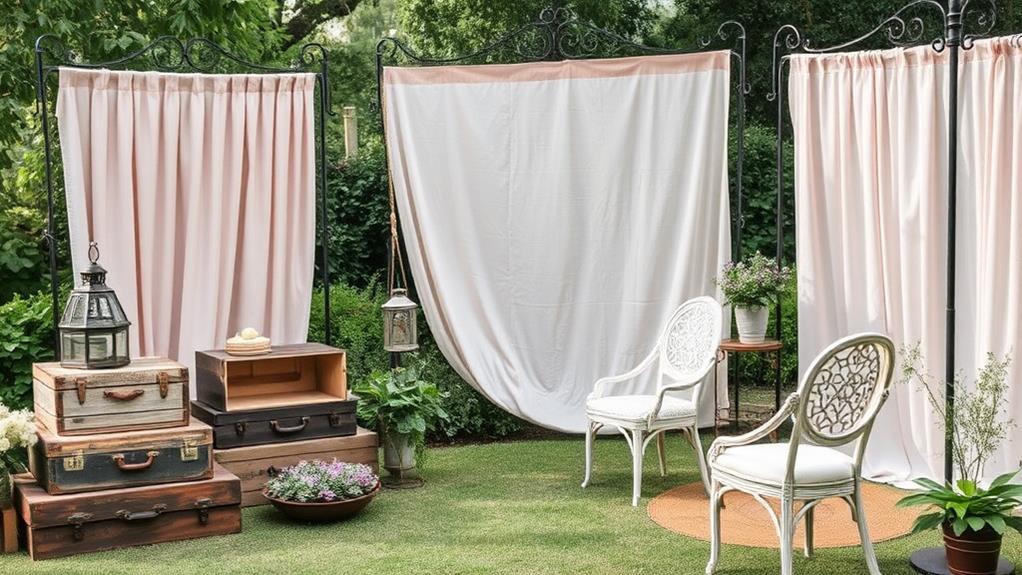
A well-curated collection of versatile props and accessories is essential for creating dynamic outdoor photography scenes. These items can transform a simple outdoor space into a variety of captivating settings for different photoshoots.
Consider investing in portable furniture pieces like rustic wooden crates, vintage suitcases, and foldable chairs that can be easily arranged and stored. Textiles such as throw blankets, picnic baskets, and colorful umbrellas add texture and visual interest to compositions.
For seasonal variety, incorporate elements like artificial flowers, faux snow, and autumn leaves that can be used year-round. Lighting equipment, including reflectors and portable LED panels, helps control and enhance natural light in outdoor settings.
Props like vintage bicycles, antique frames, and decorative ladders offer unique focal points and depth to images. Don't forget smaller accessories like mason jars, lanterns, and string lights for creating intimate atmospheres. When selecting props, opt for neutral colors and timeless designs that can be mixed and matched for various themes.
Store these items in weatherproof containers to protect them from the elements and ensure they're always ready for your next outdoor photoshoot.
Water Features
Water features can dramatically enhance outdoor photography settings, providing both visual interest and soothing ambient sounds. When incorporating water elements into your outdoor studio, consider options such as fountains, ponds, or small streams. These additions can create stunning reflections, add depth to compositions, and offer a sense of tranquility to your images.
For a versatile setup, install a recirculating water system that can be easily adjusted to create different effects. A shallow reflecting pool can double as a mirror-like surface for creative portraits or product shots. Cascading water features, like tiered fountains or artificial waterfalls, introduce dynamic movement and can be used as captivating backdrops for a variety of subjects.
When designing water features, pay attention to the surrounding landscape and ensure they blend seamlessly with the overall aesthetic. Use natural materials like stone or wood to create a cohesive look. Consider incorporating aquatic plants or decorative elements to further enhance the visual appeal. Proper lighting around water features can extend their usability into evening shoots, creating magical atmospheres with the interplay of light and water.
Texture and Color Variety
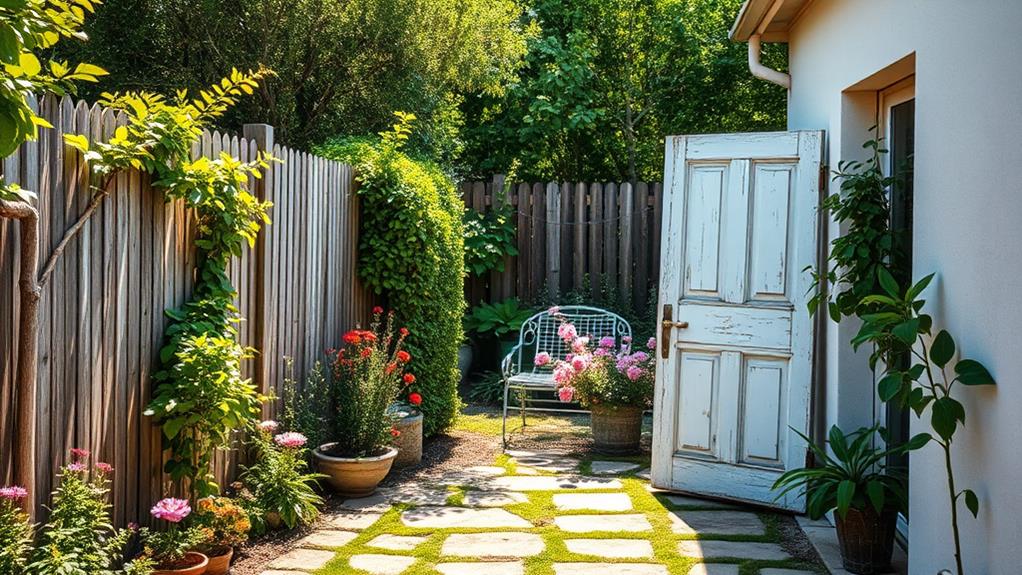
Texture-rich environments and diverse color palettes are essential elements in creating visually compelling outdoor photography settings. When renovating your outdoor space for photography, incorporate a variety of textures through natural and man-made materials. Consider combining smooth river rocks with rough-hewn timber, or juxtaposing sleek metal surfaces against weathered brick walls. These contrasts add depth and interest to your images, creating dynamic visual compositions.
Color variety is equally crucial in crafting photogenic backdrops. Introduce a range of hues through careful plant selection, choosing flowers and foliage that bloom in complementary or contrasting colors throughout different seasons. Incorporate permanent color elements through painted features, such as vibrant garden walls or colorful outdoor furniture. Remember that neutral tones like whites, grays, and earth tones can serve as excellent backdrops for subjects, allowing them to stand out.
When planning your outdoor renovation, consider how different textures and colors will interact with various lighting conditions throughout the day. This foresight will enable you to create versatile spaces that offer numerous photographic opportunities, from soft, diffused morning light to dramatic sunset silhouettes.
Maintenance and Upkeep
Maintaining a photogenic outdoor space requires consistent effort and attention to detail. Regular landscaping tasks like mowing, pruning, and weeding are essential to keep the area looking pristine. Seasonal clean-ups, including leaf removal and plant deadheading, help maintain a polished appearance year-round.
Protecting outdoor elements from weather damage is crucial. Apply sealants to wooden structures, repaint surfaces as needed, and cover delicate features during harsh weather. Regularly inspect and repair any damage to fences, decks, or garden structures to ensure they remain photogenic.
Water features require special attention. Clean fountains and ponds regularly, maintain proper water levels, and ensure pumps are functioning correctly. For artificial elements like props or backdrops, store them properly when not in use to prevent weathering.
Pest control is another important aspect of maintenance. Implement eco-friendly methods to deter insects and animals that may damage plants or structures. Lastly, stay vigilant about invasive species that could disrupt the intended aesthetic. By establishing a routine maintenance schedule and addressing issues promptly, you can ensure your outdoor photography space remains picture-perfect for every shoot.
Frequently Asked Questions
How Much Does a Professional Outdoor Photography Backdrop Renovation Typically Cost?
Professional outdoor photography backdrop renovations typically range from $5,000 to $50,000, depending on factors such as size, materials, landscaping complexity, and location. Costs can vary significantly based on specific design requirements and local labor rates.
Can I Rent Outdoor Photography Backdrops Instead of Creating My Own?
A picture is worth a thousand words, and renting outdoor photography backdrops can be a cost-effective solution. Many companies offer backdrop rentals, including natural scenery, architectural elements, and themed sets, providing versatile options without long-term commitments or renovation expenses.
What Permits Are Required for Major Outdoor Renovations for Photography Purposes?
Major outdoor renovations for photography purposes typically require building permits, zoning approvals, and possibly environmental permits. Check with your local government's planning department to determine specific requirements for your project and location. Consult a professional for guidance.
How Long Does It Usually Take to Complete an Outdoor Photography Backdrop Project?
The duration of an outdoor photography backdrop project varies significantly based on scope, complexity, and scale. Simple setups may take a few days, while extensive renovations could span several weeks or even months, depending on the specific requirements.
Are There Any Insurance Considerations When Creating Outdoor Photography Spaces at Home?
With 43% of homeowners underinsured, insurance considerations are crucial when creating outdoor photography spaces. Consult your insurer about potential liability risks, coverage for equipment, and any necessary policy adjustments to protect your investment and visitors.
Conclusion
In the pursuit of outdoor photographic excellence, transforming one's space into a versatile studio becomes an art form in itself. Like a painter's palette, a well-designed outdoor area offers endless possibilities for capturing stunning images. By thoughtfully implementing landscaping, architectural elements, lighting, and accessories, photographers can craft a dynamic environment that adapts to various styles and subjects. With proper maintenance, this living canvas will continue to inspire creativity and produce breathtaking results for years to come.
